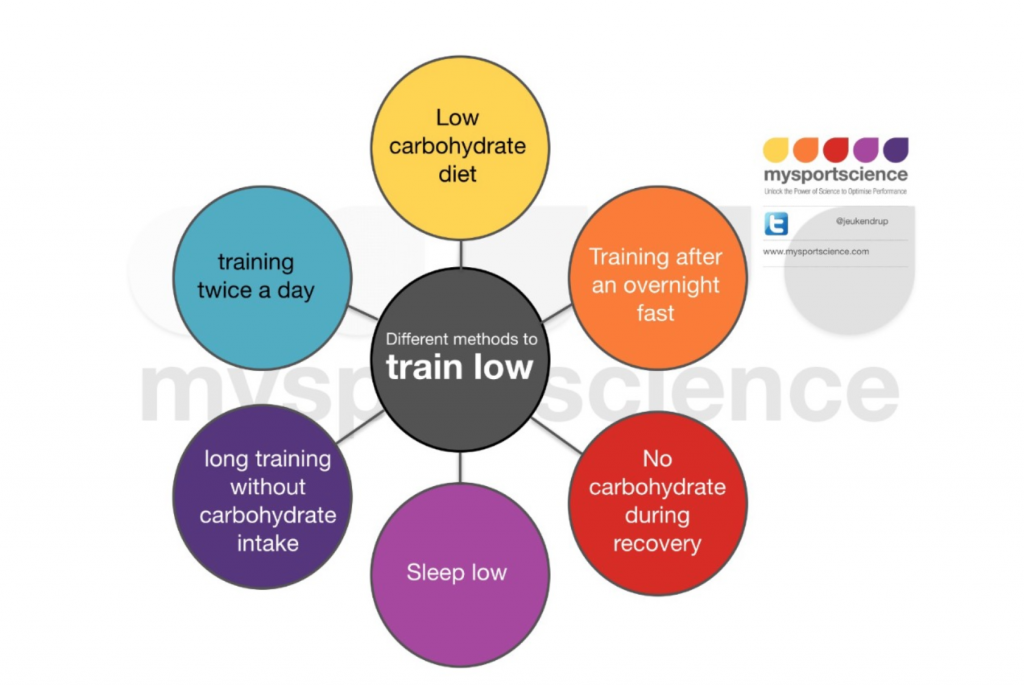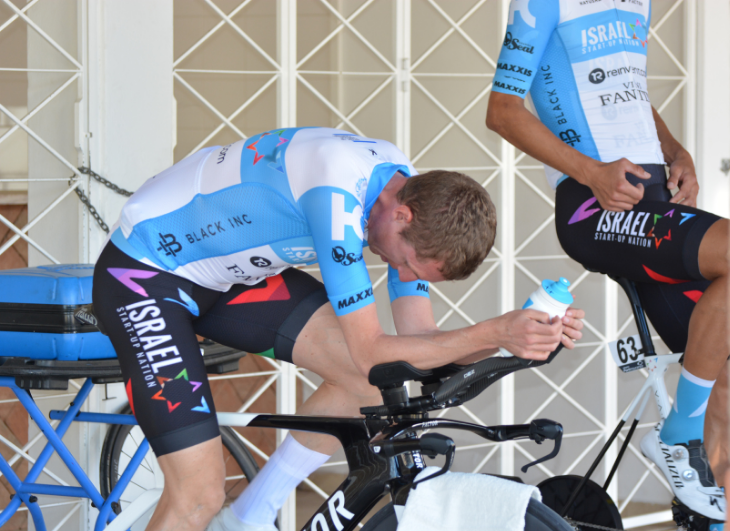I’m back! Here is the final part of my 3-part series regarding weight loss and performance.
If we quickly reflect on part 1 and part 2 of this series, we’ve covered some of the basic but fundamental factors you should consider when trying to lose weight. We have also covered some of the methods of assessment that are important to consider when you’re trying to lose weight/fat mass. In this blog, I am going to finish this 3-part series by covering a nutrition topic that seems to be gaining momentum within the cycling community: training low.
What is ‘train low’?
The ‘train low’ method is an umbrella heading for different methods of training low. One of these methods is fasted training: when breakfast is consumed after a morning training session. This method shows no differences in pre-exercise muscle glycogen between fasted or fed conditions, it shows reductions in liver glycogen and circulating blood glucose, which is higher in fed conditions. This means that doing fasted exercise isn’t always beneficial when you’re trying to use it as a method of weight loss but it can be used to support adaptations with fat substrate utilisation.
We also have the ‘eat low, sleep low, train low’ method which looks at controlling CHO intake after completing an evening training session by replenishing with very little to no CHO intake (eat low), completing an overnight fast (sleep low) and then completing a fasted training session the following morning (train low) (Impey et al., 2018). By periodising CHO intake this way, an athlete could see improvements in the activation of acute cell signalling pathways, improvements in training-induced oxidative adaptations of skeletal muscle, and in some cases, improvements in exercise performance via increased fat substrate oxidation. PLEASE talk English Jason! This basically means that this method is not primarily responsible for weight loss but it could help if performed alongside a calorie deficit and could also provide further physiological adaptations.
Why is it so popular?
Like many training strategies, this one seems popular because people think it will provide a secret formula to help them lose weight. This is my main concern with this method. I’m sorry, that’s just not the case. However, it does have benefits, so carry on reading to see how it could work for you…
How to incorporate this method into your training
As I highlighted earlier, the ‘train low’ approach is an umbrella heading (see diagram below). The infographic below was taken from Asker Jeukendrup’s mysportscience website. I have mentioned him before in previous blogs. This infographic nicely details the many different methods of training low.

Taken from: https://www.mysportscience.com
The bigger picture here, is how to consider how this method can be implemented successfully into your lifestyle and training regime whilst complimenting/supplementing your individual goals. If it’s unrealistic for you to carry out within your weekly training schedule then you won’t adhere to it! This is a nice opportunity for me to highlight that ‘train low’ methods or ‘fasted’ training does NOT mean the over restriction of foods or to completely remove foods from your diet. Nor does this mean that you should be conducting train low methods or fasted morning sessions 5-7 times a week. If you are, you’ve completely missed the point.
The train low method doesn’t have to be as complicated as it made out to be – remember, it’s all about contributing to your overall deficit….your calorie deficit, right!? Do you want to be sat on the bike, or go running or swimming, or whatever endurance-based training it is at silly o’clock in the AM to support the train low adaptations and ‘bank’ those additional kcals expended before your day begins? If you do and it works for you, then great. If not, then fine too, but it has to work for you.
I’ll finish this section by repeating: this method is NOT a magic gateway to fat loss. Fat loss is simple when written down on paper, but it is hard work and takes time. Frequent effort and adherence is the key. Everyone loses it at different rates and in different ways. Follow your own game plan.
Finding what works for you and sifting through all the information out there on weight loss vs performance can be like reading a book on French when you can’t speak it or read it. If you’ve spent time recently considering taking the plunge to develop your nutrition, reach out and let’s have a chat to discuss how I could help you take your performance to the next level, whether that be weight loss or any other aspect of your nutrition. It all starts with that first action from you. You can contact me here
I hope you enjoyed reading this series of blogs. If you have read them, please leave a comment or give it a like, if you enjoyed the read of course. All welcome is greatly appreciated and helps me as a blogger develop my content and writing.
Hope to see a lot of you soon once lockdown lifts and things return to normality!
Jason
Looking for a cycle weight loss training plan that will help you lose weight? Check out the latest plan here








